

A Project Partnership of
"PAGHIDA-ET SA KAUSWAGAN" DEVELOPMENT GROUP (PDG) Inc.
RESOURCE EFFICIENT AGRICULTURAL PRODUCTION (REAP) - Canada;
With financial support from
The Environment Program of the Partnership Branch of the
CANADIAN INTERNATIONAL DEVELOPMENT AGENCY (CIDA)
and
The Jules and Paul-…mile Lťger Foundation
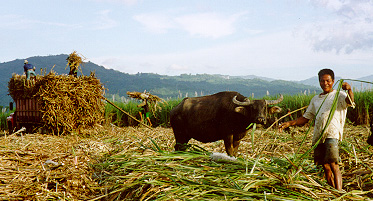
March 2000
PDG- Paghida-et sa Kauswagan Development Group was established in 1987 to empower rural communities to sustain their own initiatives, to meet their basic needs and aspirations, protect and rehabilitate ecosystems, and to participate actively in building a just and sustainable future for themselves and for others towards social transformation. The organization is currently involved in agrarian reform, organically based sustainable agriculture, institution building of people`s organizations, environmental protection and mining issues. PDG began working with REAP-Canada in 1998 to further expand their sustainable agriculture outreach in Negros. PDG, Kabankalan Catholic College Compound, City of Kabanakalan, Negros Occidental, Philippines pdg@knet.com.ph, tel and fax (63)(034) 471-2573
REAP-Canada Ė Resource Efficient Agricultural Production-Canada is an independent research and development organization based in Ste Anne de Bellevue, Quebec. Since 1986, the organization has been working with farmers in Canada and internationally in developing sustainable farming systems. Since 1991, the organization has been developing agri-fbre and bioenergy systems as a response to increasing concerns about deforestation and global climate change. REAP was awarded the International Environment Award at the 1999 CIDA awards banquet for excellence in programming in the Canadian Environmental Network International Program theme of Climate Change. REAP-Canada, Box 125 Ste Anne de Bellevue, Quebec, H9X 3V9, REAP@Interlink.net, www.reap.ca, Tel. (514) 398-7743 Fax (514) 398-7972
MASIPAG is a farmer-led network of farmers organizations and local communities, representing more than 30,000 farmers in the Philippines. MASIPAG aims to improve the quality of life, and empower resource-poor farmers by helping them regain control over seeds and agricultural production systems. MASIPAG assisted the project through the case study documentation, conference organizing and farmer training components of the project.
MAPISAN is a federation of farmers groups in southern Negros that was initiated in 1993. The alliance consists of 13 farmer associations representing more than 5000 farmers. Their main objective is the promotion of organically based sustainable agriculture. The MAPISAN farmer trainer network was responsible for the various farmer trainings conducted in the project. They also had one of their farmer leaders as a resource person for the cropping systems diversification trial farms.
University of the Philippines at Los Banos-Department of Agronomy
The project was provided with technical support in the cropping systems development and case studies by Dr Teodoro Mendoza. He also participated in the International conference "Frostbite and Sunburns:`Canadian International Initiatives Toward Mitigating Climate Change"` and presented a paper entitled "Strategies to minimize crop residue burning in the Philippine context`".
1.0 Review of Project Goals, Objectives and Components
The Southern Negros Sustainable Agriculture Development Project is located in the main sugar-growing region of the Philippines. The project involves 3 communities in the Kabankalan area as well as an additional community in a cooler upland environment approximately 80 km away. It also engages other small farmers in the region not located in these communities but who are interested in training on sustainable farming systems.
In the mid 1980ís, the region became infamous in Southeast Asia as a result of the sugar industry collapse and the ensuing food crisis. As a result, many aid organizations were established in Negros, primarily in the northern section. Paghida-et sa Kauswagan Development Group (PDG) was one of the few organizations to establish itself in the south. Many NGO's were threatened by the instability in the region at the time. With the signing of a peace accord and the advent of agrarian land reform, peasant farmers are now accessing land throughout Negros, which is creating an unprecedented interest in diversification and ecological farming methods in the region.
The Kabankalan area typically has an eight month rainy season from May to December and a four month dry season (January-April). The region has been heavily cleared of its forests, with the island of Negros experiencing 95% deforestation. Typhoons and El Nino events can create serious environmental stresses in the region as a result of the lack of forest cover.
New efforts are required in both developed and developing nations to protect and rehabilitate ecosystems upon which we depend for our food, water, housing, clothing and ultimately, our climate. In most of the hospitable regions around the world, agriculture has largely replaced natural ecosystems. Humans have progressively become more dependent on agriculture for their life support. Along with protecting the remaining natural areas, it is of paramount importance that sound ecological agricultural systems be more widely implemented so as to ensure the security of our life support systems. The development of ecological systems of food, fiber and energy production are also essential for the mitigation of climate change. Compared to conventional agricultural practices, the conversion to ecological farming methods will:
The environmental situation in Southern Negros is in a long-term trend of deterioration. The growing population is placing a tremendous pressure on the already declining natural resources in the region. The secondary forests are being heavily denuded by charcoal producers and land clearing by upland farmers. The fisheries are in an equally dismal state as a result of mangrove clearing, cyanide and dynamite fishing, pollution from mining activities, siltation and over-fishing. Deterioration of the forest and fisheries places additional pressure on agriculture to support the rural population.
The agricultural situation in Negros Occidental in the Philippines continues to be critical. Severe soil erosion is occurring on upland farms and soil organic matter is declining from crop residue burning. Input intensive farming practices makes small farmers loan dependent and vulnerable to the vagaries of the weather. There is a great need to develop more resource efficient farming systems in the region for both ecological and economic reasons.
There remains a chronic need to diversify farming in the region. In the lowland areas of Negros more than half of the available agricultural land is planted to a single crop (sugar cane), grown using conventional farming methods (fertilizers, pesticides, etc). Sugar cane offers very limited employment opportunities for women, as the work is seasonal as well as male dominated, since women do not participate in harvesting the crop. Diversifying farming systems in the region would increase food security for families and offer significantly more opportunities for the incorporation and full participation of women in all aspects of food production from planting to marketing and value added processing. Farm diversification will facilitate equitable social and economic progress to be achieved.
The following project objectives were developed through an exploratory phase of the project partnership funded by CIDA that occurred from July to September in 1998.
1. Documentation of existing indigenous and local knowledge on ecological farming systems and crop diversification. Reports and case studies on four topic areas were targeted including corn, sugar cane, rice, and vegetable based farming systems.
2. Evaluation, development and demonstration of cropping system diversification of three lowland and one upland community in Southern Negros. Trial farms of vegetables and grain legumes are being established to facilitate the introduction of new crops to create more ecological production systems in the communities and to increase food security and income stability.
3. Farmer to Farmer Training is geared towards strengthening PDGís capacity to enhance farmer training. Five hundred farmers within the MAPISAN farmer network were targeted for training in various sustainable agriculture fields.
4. The project aims to examine means of introducing sustainable agriculture in the classroom so that so that sustainable agriculture could become integrated into local training institutions.
The project engages farmers in the Southern Negros region of the Philippines. A description of the educational and income levels of one of the communities is available in the accompanying case study report. In general, most of the community members have a family income of about $1000 Cdn or 30, 000 pesos per year. Farmer training was provided to members of the MAPISAN Alliance as well as farmers outside of the alliance in northern and central Negros. Four individual communities were engaged with the crop diversification trial farms. Three of these were lowland communities in the Kabankalan area and a fourth was an upland community at the base of the Kanla-on volcano approximately 80km away. A map of Negros identifying the Kabankalan area and areas where trainings were conducted is provided on page 6.
Figure 1:
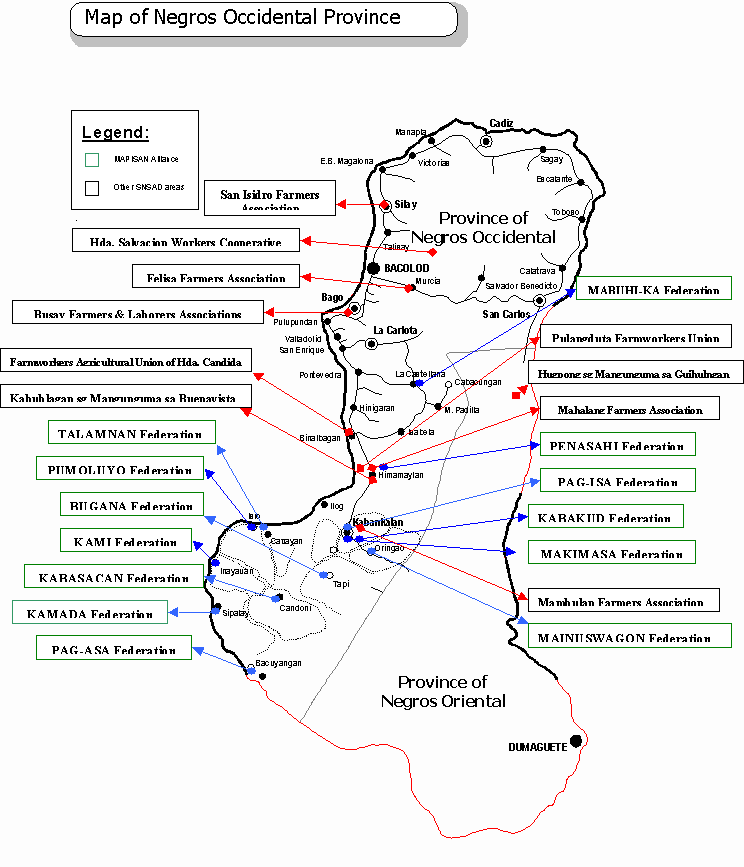
Significant discussions were held between PDG, MASIPAG and REAP-Canada regarding the case study component of the project. It became apparent that there were some limitations to the concept initially proposed of presenting separate case studies on sugar cane, rice, vegetable and corn based farming systems. The main concern was that there were no real examples of sustainable farming systems in Negros or the Philippines where sugar cane or corn was the dominant crop. The main experience with sustainable agriculture has largely been with rice and vegetables. It was decided to write detailed case studies of three known success stories in Negros. One of the case studies would cover the transition of a former sugar cane hacienda towards organic based farming of sugar cane, corn and vegetables. This would cover 3 of the important cropping systems that we were looking to describe at the outset of the project. A second case study would examine the transition of an upland farm to diversified rice, fruit, vegetable and livestock production. Since there has been such widespread deforestation of the native forest of Negros (about 95% deforestation), it was decided that a third case study would examine agroforestry systems.
The farmer-scientist organization (MASIPAG), with which PDG has a longstanding partnership, was engaged to help with the case study component of the project. MASIPAG had previous experience in case study development and was interested in more effective documentation of local knowledge systems on sustainable agriculture for their national farmer network.
Overall the three case studies which accompany this report give significant insight into future needs and opportunities for improving sustainable agriculture programming. Further case studies may be described in the future. It is essential that local knowledge systems be more fully documented as part of a process of building farming systems knowledge for Negros and the bio-region of South-East Asia as a whole.
The first case study examines the transition of a former sugar cane hacienda towards an agro-ecological village. It focuses on initiatives by the Flora community near Kabankalan to develop organic based farming practices and systems of energy self-reliance. The case study compares the agro-ecological village development approach to conventional systems and explains why the development of agro-ecological villages can lead to low impact on the local environment as well as minimize impacts on the biosphere from greenhouse gas emissions.
The second case study is about the diversified farm of Rudolfo Oray, a farmer in an upland area near Kabankalan. Mr. Oray is a leading farmer trainer in Negros who has an excellent understanding of ecological rice, vegetable and livestock production. The farm has been the subject of many farm visits and is a fine example of a farm for the adoption of MASIPAG farming techniques in Negros. This case study focuses on the adoption of diversified and integrated farming systems as well as the external contributing factors.
The third case study is about the experience of a "barefoot" (grassroots) environmentalist on forest regeneration on the denuded island of Negros. The focus is on his communityís effort in the propagation of indigenous tree species and on-going documentation of their medicinal uses. This community based initiative has been previously mentioned in a case study of PUMOLUYO Federation. However, it is through this project that an in depth study of the initiative has been more completely examined.
The main goal of this component is to assess crop diversification options in four communities in the southern Negros region for providing alternatives to create more ecological farming systems of food production. This diversification can have positive impacts on nutrition and food self-reliance in the farming communities as well as provide a greater diversity and stability in income sources. However, there are some concerns that increasing the production of annual crops can reduce soil fertility. Sugar cane is one of the few crops that can restore soil fertility. Improved crop residue management techniques need to be developed to make this a reality so that greater crop diversification can occur.
Sugar cane dominates the landscape of the lowlands in Southern Negros. It is a crop that has had widely recognized social and economic impacts on the region. Sugar cane production has considerable environmental impact, as the crop requires significant amounts of fertilizer and residual herbicides, such as simazine. These agronomic practices cause concern about pesticides and fertilizer in rural drinking water, as the high water table during the rainy season facilitates the seepage of agri-chemicals into the ground water. Another ecological problem with sugar cane is the low biodiversity in the landscape. Once weeded, the crop is a monoculture with minimal alternative food sources for various species. The low biodiversity problem is exacerbated after harvest, when the large amounts of residue produced by the crop are, for the most part, burned in the field. This residue burning kills any species that are able to live in cane fields such as snakes, wildcats and ground-nesting birds. Increased rat populations have resulted from the loss of these predators. Residue burning increases atmospheric pollution and causes respiratory problems for the people of the nearby communities. Residue burning is also the primary cause of declining soil fertility in the sugarlands of Negros.
For the agrarian reform beneficiary farmers, sugar cane is a relatively capital intensive crop offering limited employment opportunities for women. Rice and vegetable production offer much greater production and marketing opportunities.
However, sugar cane production can have advantages if managed properly. By using organic based farming practices, as well as scaling down sugar from a single crop on the farm to one of many crops, its production can be continued in a more ecological fashion. From the small farmersí perspective, sugar cane is an important income source as the crop grows well in the lowland of Southern Negros. Furthermore, the price growers receive for the crop is subsidized by the Philippine government, which makes it one of the most cost competitive major crops to grow in the region. Sugar cane is a high biomass producing perennial crop and keeps a permanent cover on the soil, as such, it is one of the few crops in the region that can improve soil fertility if managed properly. It works well as a rotational crop with more nutrient intensively cultivated crops, such as corn and vegetables.
To improve soil fertility management, a continuous residue farming system is being encouraged in the communities by removing the lower leaves on the cane, three months before the harvest. With fewer leaves at harvest, the volume of cane residue after harvest is greatly reduced, thus simplifying trash management. High yielding sugar crops can produce excessive amounts of residues, which are burned to prevent interference with the growth of subsequent crops. Soil organic matter levels can be increased and fertilizer use decreased through the encouragement of residue decomposition in the field. This decomposition stimulates nitrogen-fixing bacteria that can replace chemical fertilizer use. If managed properly, sugar cane can sustain soil fertility and enable diversified farming with annual grain crops and vegetables to be grown without an overall depletion in the soil fertility. As well, sugar cane mulch helps to minimize soil erosion, and the tillers provide a primary food source to a communityís carabaos (water buffalo). Without improved sugar cane soil fertility management, crop diversification will only exacerbate the decline in soil fertility problems in Negros.
To address the problem of declining soil fertility under sugarcane, training for a continuous mulch farming system was provided to two communities (Bino and Flora). Two, 1 ha sites, were mulched in July of 1999 to demonstrate to the communities the technique of continuous mulch farming. On subsequent inspection of the sites in December 1999, the mulch had almost completely broken down. The farmers perceived that this trash farming system would be an excellent means of allowing sugar cane to build soil fertility in their developing diversified sugar cane/corn/and vegetable production farms (Figure 2). The communities are presently beginning the process of incorporating trash farming into their field scale production.
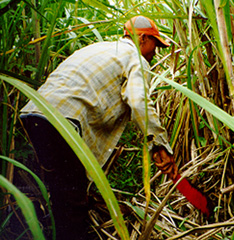
Figure 2: To encourage soil organic matter accumulation and nitrogen fixation, sugar cane was manually detrashed 3 months before harvest at the Bino community near Kabankalan

Figure 3: After detrashing, the leaves form a mulch to help control weeds and conserve moisture. The detrashing also reduces crop lodging from typhoons.
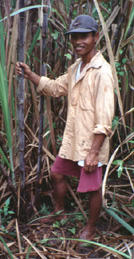
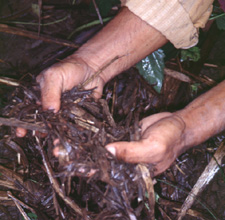
Figure 4 (Left): Just prior to harvest in December 1999, the trash was largely decomposed. Harvesting will proceed quickly as the cleaning of the leaves from the cane at harvest will be an easy task. Figure 5 (Right): Leaf litter turns black during decomposition, indicating the presence of nitrogen fixing fungi.
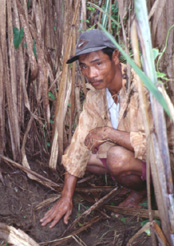
Figure 6: Immediately preceeding harvest in December 1999 in non-detrashed plot. The soil is bare and the cane stalls covered in leaves.
3.2 On-farm trials for farming systems diversification
To help encourage diversification of farming systems in Negros, trial farms were established in four communities to test vegetables and grain legumes. Vegetables were recognized as being of importance for increasing food self-reliance and were viewed as one of the few income opportunities for farmers that could match with sugar cane. At each of the four communities, the goal was to establish trial farms to assess various vegetable crops and grain legumes. Three communities were lowland farming communities in the Kabankalan area consisting of Bunga (BAKAS farmerís association), Flora (PAGLA-UM farmerís association) and Bino (KABBUHI-AN farmerís association). They are also involved in PDAPís Participatory Program in Sustainable Enterprise (PPSE). PDG is the local partner facilitating the PPSE program implementation in these Kabankalan communities. This program is funded by CIDAís bilateral division. The fourth community, Masulog, is an agrarian reform community near the Kanla-on volcano that mainly grows vegetables. The community was recruited by PDG and is now receiving additional support from AUSAID.
The major seed houses in the Philippines were visited to meet with scientists who perform research on field crops and vegetables. Open pollinated, disease resistant plant material was accessed for inclusion in trial farms at each of the communities. A major source of seed proved to be the vegetable crops division of the Institute for Plant Breeding in Los Banos whose staff was very cooperative in assisting the project (See tables 1 and 2).
In the first trial farm experience, both small and large trial plots were sown with various vegetable and field crops. During the first visit by the REAP staff to the project sites in Negros in December 1998 - January 1999, the goal was to establish trial farms at the three lowland communities. An initial site visit was also made to the upland community of Masulog to meet the farmers and to assess their particular interests in testing new vegetables. The PAGLA-UM and BAKAS farmer association communities subsequently established trial farms on .4-.5ha. The Pagla-um association established 21 selections of 12 different types of vegetables and grain legumes. The Bakas association tested 18 selections of 13 different types of vegetables and grain legumes. The Kabbuhian association was experiencing organizational and financial problems in managing the 120 ha estate. This was leading to significant hunger problems in the community. As a result, community farm planning meetings were held to work towards resolving the main problems. The crop diversification trial efforts were subsequently oriented towards relatively easy to grow vegetable and grain legume crops of squash, eggplant, mungbeans and pole sitao.
At the upland community of Masulog, the community also had organizational problems but possessed more experience in vegetable growing. Larger quantities of vegetable seeds were provided to this community as they expressed interest in establishing larger production areas to test the various crops. Six different vegetables were assessed in 1999.
An additional trial farm was established in January 1999, at the Kalibutan farmer training centre near Orignao, approximately 12 km south of Kabankalan. The six types of grain legumes listed in Table 1 were planted along with cowpeas, chickpeas and pole sitao. In total 18 different grain legume varieties were assessed. Also supporting crop diversification is a corn improvement program at the centre which is managed by the MAPISAN farmers alliance. It`s goal is to improve corn plant materials in the Visaya`s using much the same process as has been used for rice. The MAPISAN farmersí alliance has hired a farmer to collect corn germplasm, do performance testing of materials and initiate corn breeding activities. A corn sheller and weigh scale provided to the project to assist MAPISAN`s ability to accurately assess corn performance differences. It is anticipated that corn performance trial farms can be initiated in phase II in some of the communities along with the rice and vegetable trial farms that are being conducted.
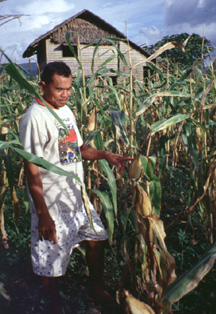
Figure 7: Mapisan farmer trainers are collecting open-pollinated corn germplasm and assessing these materials in on-farm performance trials to help farming system diversification
|
Common Name |
Ilonggo name |
Variety |
|
Vegetable |
||
|
Bitter Gourd |
Amargoso/Ampalaya |
Santa Isabelle |
|
Cucumber |
Pipino |
Bituin |
|
Eggplant |
Talong |
DLP, Ragini, Kabakalan native |
|
Hot pepper |
Katumbal |
Mr. Paras |
|
Hot pepper: sinigang type |
Paitan |
Cindy Gang |
|
Bell pepper |
Pedada |
Plastic sweetheart, Yolo Wonder |
|
Okra |
Okra |
Smooth Green |
|
Onion (bulb) |
Sibuyas bombay |
Red Creole CX 2 |
|
Onion (green) |
Sibuyas Dahon |
Fuyuno |
|
Radish |
Rabanus |
Speedy |
|
Squash |
Kalabasa |
Rizalina |
|
Tomato (cherry) |
Kamatis |
TMTW, Explorer (hybrid) |
|
Watermelon |
Sandiya |
Sugar baby |
|
Grain Legume Crops |
||
|
Bush Sitao |
Balatong nga lip-otan |
BS #3 |
|
Moth Bean |
Common | |
|
Mungbean |
Mongo |
Pagasa 7 |
|
Peanut |
Mani |
IPB #10 |
|
Pigeon Pea |
Kadios |
Native |
|
Soybean |
Soyabean |
PBSY #2, PBSY #8 |
|
Herbs/Spices |
||
|
Basil |
Calo-oy |
Thai |
|
Garlic Chives |
Ahos dahon |
IPB Flowering variety |
In the second half of phase I, the concept of using trial farm areas of .4-.5 ha (Pagla-um and Bakas area sizes) was re-examined based on the first trial farm experience and subsequent discussions with the farmer cooperators. The long-term strategy that was identified was to try smaller trials farm areas (approximately .1 ha). This was identified with having several distinct advantages:
The advantage of the larger plots was that it let more people in the community taste the various vegetable and field crops which was especially enjoyed in the case of watermelon and cucumber in the dry season. As well, larger plots provided a more realistic assessment of the crop potential. However, it was felt that individual farmers would take the risk of scaling up the crop if they see that it appears promising.
Overall the crops planted early in 1999 showed varying levels of adaptability. The most successful varieties experienced in the lowland trial areas were soybeans, bush sitao, pole sitao, onions, green onions, mungbeans, squash, cucumber, and okra. Other crops showed significant promise, but required further testing or cultural management improvements such as watermelon, moth beans, carrots and ampalaya. A second set of trial farms was established late in 1999 by the Bakas and Pagla-um farmers associations. These trials provided further experience in crop diversification which led to some recommended new crops and varieties for scaling up in the communities (Table 2 and Appendix 1). Some of these crops and varieties are now being grown on a commercial basis in the communities for the first time. An analysis of new crop introduction in the communities will be made in phase II of the project. As well, additionally communities outside of the Kabankalan area will be added to this component of the project to further help crop diversification efforts in the region of Southern Negros.
|
Lowland |
Upland | ||
|
Type of Crop |
Variety |
Type of Crop |
Variety |
|
Bitter Gourd |
Santa Isabelle |
Carrot |
Improved Kuroda |
|
Okra |
Smooth Green |
Cucumber |
Bituin |
|
Pepper |
Yolo Wonder |
Squash |
Suprema |
|
Squash |
Rizalina |
Radish |
Speedy |
|
Watermelon |
Sugar Baby |
||
|
Bush Sitao |
UP BS3 |
||
|
Mungbeans |
Pagasa #7 |
||
|
Peanuts |
IPB #10 |
||
|
Soybeans |
#2, #8 |
||
Farmers are also being provided with technical support on seed conservation and propagation techniques during site visits and have been provided with a guide on seed conservation published by the University of the Philippines Los Banos. A farmer-training session was held in February, 2000 on vegetable seed production and conservation by Dr. Rodel Maghirang. He is responsible for vegetable breeding and production at the Institute of Plant Breeding in Los Banos. Seed storage containers were also distributed to the communities to help encourage seed conservation. These collective activities should further help the perpetuation of community based seed conservation. To encourage wider access to seeds within the Southern Negros region, distribution linkages are also being created with other organizations interested in increasing the availability of open pollinated, disease resistant seeds.
The ongoing strategy for vegetable and field crop diversification in southern Negros through the farmersí federations will follow the MASIPAG rice trial farm model that is described in the Oray case study in Appendix 1.2. The concept is for farmers to receive training on organic vegetable production, followed by releasing small amounts of seed for trial farms. Once the farmers have confidence the crops are well adapted to their farms, they can subsequently scale up production through seed multiplication. In this way, improved plant material and production systems can become widely available to farmers at a minimal cost for programming. A third component of the system will include more widespread seed conservation training by the MAPISAN trainers to ensure the long-term survival of the seeds. A training module will be prepared for this coming year and translated to Ilongo. In subsequent years, training on vegetable and field crop plant breeding could be initiated to further continue the self-reliance of the plant improvement system.
This approach, we believe, can empower farmers in the diversification process of their farms. Major benefits from the program will be a more diversified landscape, minimal use of chemical inputs, increased food security in the communities and a more balanced and nutritious diet. The wider scale availability of lower cost vegetable and grain legumes, along with improved corn and rice production, should help to reduce the ecological footprint of the rapidly growing population in the Philippines.
Through this project, five hundred (500) farmers were targeted for training on sustainable agriculture (SA). Each federation of the MAPISAN farmer alliance assessed its training need(s) and, based on these assessments, actual trainings were conducted. In the first half of Phase I, the trainings focused on training/orientation on MASIPAG (levels 1&2), Diversified Farming Systems (DIFS), livestock development, organic crop production and advanced training for the MAPISAN trainers. During this period a total of 299 farmers were trained. Table 3 shows the various federations which participated in the training where training was conducted.
For the second half of the project, additional trainings were conducted for farmers from northern and central Negros. As a basic requirement in the adoption of sustainable agriculture practices, theoretical preparations to set the right perspective have to take place in the form of formal trainings and cross farm visits. From July 1999 to February 2000, 10 sustainable agriculture orientations (MASIPAG 1) were conducted for these farmer organizations outside of the existing MAPISAN Alliance.
A seed conservation and production training workshop to support vegetable diversification initiatives was also conducted. Participants to this training were selected farmers from the MAPISAN alliance. The training focused on seed conservation and production processes.
In total 588 farmers (388 men and 232 women) received two day training courses on sustainable agriculture during the course of the project. This exceeded the project target of 500 farmer trainings. The farmer trainings are also providing an opportunity for new farmer trainers to be mentored. At most trainings, "second liners" are being brought into the training process so that the small number of existing farmer trainers can be expanded. There is also a conscious effort to select and develop farmer trainers who are excellent practitioners. In this way, farmers can observe sustainable farming practices on real working "model farms". Some of the more basic trainings provided to farmers are outlined below.
This initial training level presents the need for sustainable agriculture in the context of the prevailing national and local situation in agriculture. It also introduces the MASIPAG Program, the trial farm as a strategy towards SA, and monitoring and evaluation methods in on-farm research.
This training delves deeper into the issues and problems as brought about by the Green Revolution. It also tackles soil problems and examines soil as the basic medium for plant growth. Diversified, integrated farming systems, alternative pest managment, rice breeding and seed technologies are also discussed.
This is where farmer groups interested to adopt SA have the opportunity to visit farms of SA adopters and conduct exchange/sharing of experiences with other farmersí group. The hosting farmersí organization also makes this as a collective activity since prior to the visit, the whole community helps in the preparation of the subject farm.
This involves importance, methods of diversified farming (vegetable production, livestock production, fish farming, traditional tree growing) and farm planning.
|
Date Conducted |
Organization |
Training Title |
Number of Participants Training Cost | ||
|
Farmer Training |
Male |
Female |
Total | ||
|
December, 1998 |
MAPISAN Alliance |
Trainers Training |
33 |
2 |
35 |
|
February, 1999 |
Mabuhika Federation |
Sustainable Agriculture Orientation |
17 |
8 |
25 |
|
March, 1999 |
Bugana Federation |
Sustainable Agriculture Orientation |
21 |
2 |
23 |
|
March, 1999 |
Kabakud Federation |
Sustainable Agriculture Orientation |
21 |
27 |
48 |
|
March, 1999 |
Kabasacan Federation |
DIFS & Livestock Development |
26 |
7 |
33 |
|
April, 1999 |
Bugana Federation |
Sustainable Agriculture Orientation |
21 |
2 |
23 |
|
April, 1999 |
Kabasacan Federation |
Sustainable Agriculture Orientation |
26 |
6 |
32 |
|
May, 1999 |
Kabakud Federation |
Organic Crop Production |
15 |
21 |
36 |
|
May, 1999 |
Mabuhika Federation |
Organic Crop Production |
23 |
6 |
29 |
|
May, 1999 |
Penasahi Federation |
Organic Crop Production |
15 |
9 |
24 |
|
December, 2000 |
Hugpong sang Mangunguma sa Guihulngan |
Sustainable Agriculture Orientation |
4 |
16 |
20 |
|
January, 2000 |
Felisa Farmersí Association |
Sustainable Agriculture Orientation |
10 |
11 |
21 |
|
January, 2000 |
Brgy. San Isidro Farmersí Association |
Sustainable Agriculture Orientation |
8 |
14 |
22 |
|
January, 2000 |
Busay Farmers and Laborers Org. |
Sustainable Agriculture Orientation |
13 |
16 |
29 |
|
January, 2000 |
Hda. Salvacion Workers Cooperative |
Sustainable Agriculture Orientation |
12 |
13 |
25 |
|
February, 2000 |
Farmworkers Agricultural Union of Had. Candida Brgy, Biao, Binalbagan |
Sustainable Agriculture Orientation |
15 |
11 |
26 |
|
February, 2000 |
Kahublagan sg Mangunguma sa Buenavista Brgy. Buenavista, Himamaylan |
Sustainable Agriculture Orientation |
20 |
9 |
29 |
|
February, 2000 |
Mahalang Farmers Association Brgy. Mahalang, Himamaylan |
Sustainable Agriculture Orientation |
19 |
16 |
35 |
|
February, 2000 |
Mambulan, Farmers Association Brgy. Mambulan, Kabankalan |
Sustainable Agriculture Orientation |
8 |
16 |
24 |
|
February, 2000 |
Pulangduta Farmworkers Union Pulangduta, Kabankalan City |
Sustainable Agriculture Orientation |
14 |
17 |
31 |
|
February, 2000 |
MAPISAN Alliance |
Seed Conservation & Production |
15 |
3 |
18 |
|
TOTAL |
356 |
232 |
588 | ||
|
CONFERENCES | |||||
|
February 5 - 9, 1999 |
MASIPAG Conference Kabankalan |
Conference organized by PDG/ MAPISAN / MASIPAG / NOAC |
400 | ||
|
February 24 - 25, 1999 |
MASIPAG, Los Banos |
Organic Marketing and certification |
30 | ||
|
Jan. 14 Ė 15, 2000 |
Various Farmersí Organization c/o Promotion of Church Peopleís Response (PCPR) |
Forum on Sustainable Agriculture and Sustainable Development in Negros |
103 |
99 |
203 |
|
TOTAL |
633 | ||||
In order to more effectively conduct sustainable agriculture trainings, training modules were translated into Illongo by trainers in the MAPISAN alliance. This makes the modules more accessible to Negros farmers. Translations focused on the following sustainable farming technologies:
Alternative Pest Management
What is Sustainable Agriculture?
As can be seen in Table 3, Phase I also helped to support three conferences on sustainable agriculture with 633 participants. These exposure trainings when combined with the MAPISAN training events enabled the project to contribute to sensitizing over 1200 participants to sustainable agriculture.
MASIPAG Conference:
On February 5-9, 1999, the national conference of MASIPAG was held in Kabankalan, with PDG being the local organizer. Sustainable agricultural systems, the transition process to sustainable agriculture, community organizing and the role of NGOís were all addressed in the conference which was attended by 400 participants (primarily farmers). Farm visits were made to several of the communities engaged in the project to examine the farm diversification underway. The Kabankalan area farmers who hosted farmers from outside the community facilitated a great deal of information exchange.
Marketing Workshop:
On February 24 and 25, 1999, a workshop on organic certification and its role in marketing was held in MASIPAGís head office in Los Banos. Thirty delegates of farmer organizations from across the Philippines were present. Alex Hanley (volunteer for REAP-Canada and an organic farm inspector) and Emmanual Yap, executive director of MASIPAG, helped lead the activity.
Negros Sustainable Agriculture and Development Forum
On January 14-15, 2000, a forum on Sustainable Agriculture and Sustainable Development in Negros was conducted in cooperation with the Promotion of Church Peopleís Response (PCPR). The forum highlighted the monocrop economy, land problems and food security issues. It was in this context that the concept of sustainable agriculture was presented. Two hundred and three (203) participants attended with excellent participation from women.
In support of the crop diversification and farmer training initiatives on sustainable agriculture, appropriate low cost equipment was identified that could be either purchased or manufactured locally. Most of the items were basic farm tools identified by the farmers as necessary tools to make their farming system development more effective. An engineer from PDG visited the Los Banos area to receive training on manufacturing several of the devices including the rice hull cooker and cono rice weeder. PDG has small machine shop equipment that is currently underutilized. The manufacturing of appropriate tools for sustainable agriculture locally could help improve farming systems development in the region and develop another income generating project for PDG. Once the initial tools are made, it is anticipated that a revolving loan fund can be developed that will make the tools accessible to a larger number of farmers in southern Negros in the future. The tools manufacturing activity is providing employment and skills development, as labourers from the communities are being trained to do the fabrication.
Garden Hoes: Forty garden hoes were manufactured to reduce hand weeding requirements. Hoes also serve to open furrows and holes for vegetable seeding and transplanting. Basic tools such as hoes and shovels are widely lacking in the communities.
Rice Planting Marker Rakes (Figure 2): Forty rakes were manufactured. These are devices that are used to mark rows for rice planting. The devices are dragged over the field immediately prior to transplanting rice. The marker rakes allow for precision rows to be transplanted, enabling precise mechanical weeding operations to follow.
Rolling Cono Rice Weeder: Assembly of 101 of these devices is currently being completed. The cono rice weeders were used in lowland rice fields for weeding between transplanted rows in the MASIPAG rice farming system. The devices are 15 times faster than hand weeding. Only a minority of the communities in Negros are using this technology because of their inability to access the equipment. The conventional rice farming approach is to broadcast seeds and spray with herbicides. This is a large annual expense for farmers and they have full exposure to pesticides because it is applied with a back pack and no protective clothing is worn.
Rice Hull Cookers: A major revelation during the project was the increasingly difficult time many of the communities are having accessing firewood. The deforestation problem is worsening in Negros. Women in the Bino community reported walking four hours every 3 days to obtain firewood for cooking or 5 days per month. The cost of purchasing firewood and using kerosene for firestarting amount to appoximately 3000 pesos per year which is approximately 10% of an average householdís income. The Lo-Trau rice hull cooker was identified as a promising solution to improve the household cooking situation and to ease the burden on the womenís lives. Thirty-four of the cookers were purchased from two separate manufacturers in the Los Banos area. The stoves are clean burning, fast cooking and reduce the health risks from biomass cooking for women (Appendix 2). More units will be purchased or constructed in the year 2000.
Seed Storage Coolers: Fifty coolers were distributed to the communities to help encourage seed conservation. Rodents and insect pests, as well as moisture and temperature fluctuations are all major reasons seeds are not properly conserved. This activity provides additional support to the training on seed conservation.
Seed Threshing Equipment: Several hand operated peanut and corn shellers were purchased to be made available to the four communities for assessment purposes. As well, a PDG manufactured corn sheller is under fabrication and is presently being tested. These hand-operated devices are foreseen to greatly reduce the time and energy usually spent in manual shelling. Corn and peanuts are important crops in the region.
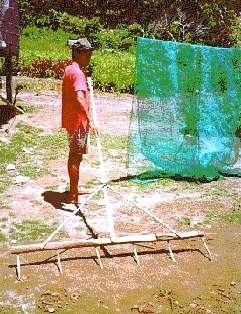
Figure 8: A marker rake enables precise rice transplanting
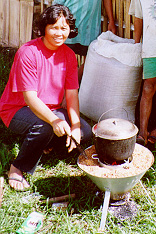
Figure 9: Rice hull cooker at the Bino community near Kabankalan.
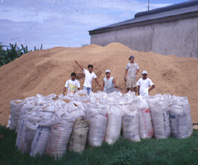
Figure 10: Rice hull is an unused residue at most rice mills that can be recycled for household cooking. More than 2 million tonnes of rice hull are produced every year in the Philippines.
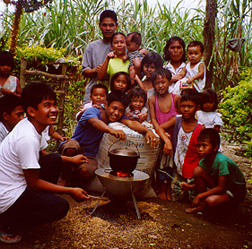
Figure 11: Communities are extremely interested in this low-cost cooking alternative. Rice hull ash is also an excellent soil amendment that can help reduce fertilizer requirements.
In the first quarter of 1999, an exploration of the possibility of implementing sustainable agriculture (SA) in the classroom at the nearby Kabankalan Catholic College was made. This was done through consultations with different persons from the academe. The institution is a training center for teachers in Negros. The consultations resulted in recommending some directional changes for this component. It was revealed that the process of integrating a different module into the existing curriculum requires approval by the Education Department. This is only possible if one has significant influence in the Department. Secondly, even if this is made possible, a longer period of time is required- which is beyond the target time frame of the project. Hence it was decided to de-emphasize this component of the project.
By the end of 1999, it was decided that the best avenue for strengthening capacity in sustainable agriculture in local institutions was to improve the library resources at the provincial agricultural college (Negros Occidental Agriculture College) which is located 15 km southeast of Kabankalan. Many of the students attending the school are sons and daughters of farmers in the MAPISAN alliance. The college is attended by approximately 1000 students but has no phone line. Hence, internet access is unavailable for students researching projects. A recent internal review of the college resources revealed that the library was one of the weakest aspects of the school. Subsequently, a collection of books was purchased which emphasize sustainable agriculture. A list of the books donated to the library will be also be given to the MAPISAN trainers to make them aware of the resource materials that are now available through NOAC. A total of twenty three (23) books were collected as reference materials for the farmers and students enrolled in Agriculture. These are:
1. How to Grow More Vegetables by John Jeavons
2. Pechay Production in the Philippines ( A Cooperative Project of the Bureau of Vocational Education)
3. Mungo Production in the Philippines by: I.C. Cagampang & R.RM. Lantican
4. Pests & Diseases of Forest Trees in the Philippines (A guide Book)
5. Pastured Poultry Profits by: Joel Salatin
6. Soil Fertility by: E. Pfeiffer
7. An Agricultural Testament by: Sir Albert Howard
8. Farmers Research in Practice by: Laurens Van Veldhuizen, Ann Waters-Bayer, Ricardo Ramirez, Debra Johnson and John Thompson
9. Vetiver Grass (National Academy Press, Washington D.C. 1993 )
10. Farmer-Led Extension edited by: Vanessa Scarborough, Scott Killough, Debra A. Johnson & John Farrington
11. Two Ears of Corn by: Roland Bunch
12. Farmer First edited by: Robert Chambers, Arnold Pacey & Lori Ann Thrupp
13. Florida Forage Handbook by: Carrol G. Chambliss
14. Florida Tomato Scouting Guide by: Ken Pernezny, Dave Schuster, Phil Stansly, Gary Simone,Van Waddill , Joe Funderburk, Freddie Johnson, Richard Lentini & James Castner
15. Philippines Soils: Their Distribution, General Land Use and Parent Materials by: Nicanor C. & Jose I. Clar de Jesus
16. The Potato Marketing System in Major Production and Demand Areas in the Philippines
17. Vegetable Gardening in Florida by: James M. Stephen
18. Tropical Fruits & Vegetables Dehydration by : Sonia Y. de Leon, PH. D., Lydia O Martinez, MSFS Ofelia C. Bravo, MSFT
19. Plant Resources of South-East Asia (Pulses)
20. The Mungbean Marketing System in Major Production and Demand Areas in Luzon
21. Sell What You Sow ! by: Eric Gibson
22. Understanding Crop Production by: Neal C. Stoskopf
23. Plant Breeding Theory And Practice by: Stoskopf/Tomes/Christine
In the exploratory phase of the project it was identified that farming systems diversification improved livelihood opportunities for women. Sugar cane, which heavily dominates the landscape of southern Negros, is largely a male dominated production activity. It provides only seasonal employment for women in weeding, fertilizing, planting and cane point preparation. The new production technique of continuous detrashing (described in the farming systems diversification section) can provide additional labour activities for women. Traditionally, during the harvest, the men do stalk cleaning.
The expanding vegetable, corn and rice production in the communities is creating interesting employment opportunities for women such as vegetable marketing. However, there is an increasing need to introduce more labour saving devices to meet the increasing household labour requirements with farming system diversification away from sugar cane. This is particularly the case for monotonous jobs such as crop weeding and shelling. The recent introduction of hoes, mulch farming in sugar cane and the cono rice weeders should minimize the large labour requirements for weeding. As well, the communities in the Kabankalan area now have access to hand corn and peanut shellers. Reducing the monotonous labour requirements for hand shelling may increase the cropping frequency and consumption of these crops in the diets of the communities.
Another major labour demand identified was the task of firewood gathering, which generally falls upon women. In the Bino community, women reported spending 4 hours every three days (5 days per month) walking the surrounding hills searching for firewood. Scarcity of fuelwood is a growing problem throughout Negros and the Philippines as a whole. The recent introduction of the Lo Trau rice cooker in the communities appears to be able to have a profound impact on improving the quality of the lives of women. It was obvious in their positive response to the technology. During a training session to expose the Bino community to the technology, all the women present said they would purchase the device on a low-interest rate monthly payment basis. Because of the clean-burning nature of the rice hull cooker, the potential for respiratory infections and eye infections are greatly minimized. In much of rural Asia where firewood burning is prevalent, women die at earlier ages then men due to respiratory related problems from prolonged exposure to smoke. The rice hull cookers, in conjunction with proper chimneys, have the potential to extend the lives of these women. There also appeared to be a significant interest in the technology by the women as it was perceived to modernize their kitchen. Presently, LPG is highly esteemed in the communities. However, it is outside of the earnings level of all but the wealthiest farmers. The rice hull cookers are affordable to all and were perceived to be a major convenience for cooking. Time spent cooking is reduced. A cooking test done in the Flora community found the firewood and charcoal stoves to boil water in 15 and 20 minutes respectively while the rice hull cooker and LPG stoves boiled water in 5 minutes. This is important for women as they are largely responsible for meal preparation. Children start school at 7:20 am in the communities, thus, they must be fed and their lunches prepared at an early hour, especially when they need to travel longer distances to get to school.
The farmer trainings have also been beneficial to women and there has been excellent participation. During the course of the 1st phase of the project approximately 40% of the 588 trainings were provided to women. The farmer training empowers women to take a more active role in farm management. This is now possible due to the diversification of the farming system away from sugar cane. In Phase II, efforts will be made to mentor female trainers, so that they can also take a lead role in advancing farmer training programs in Negros.
PDG staffing on the project has strongly involves women in key roles. Emily Guara coordinates the project and has recently completed a degree in business management. Arlene Gallano oversees finances on the project. Maricel Garal works as the PDG technical staff person to implement the project with the communities.
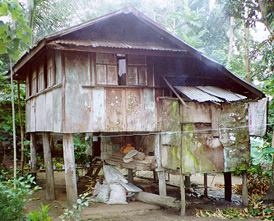
Figure 12: Women are highly exposed to indoor air pollution which results in chronic respiratory problems that can lead to early mortality.
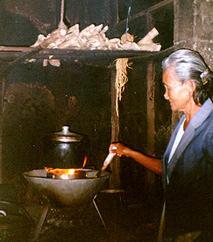
Figure 13: Higher efficiency stoves reduce indoor air pollution and ease the burden on activities such as the collection of fuelwood and the amount of time spent cooking.
The Canadian public has been exposed to the project through a number of venues including conference presentations, displays, articles and REAPís web site. Roger Samson gave a presentation to the citizens of the West Island of Montreal in November 1999 at the Morgan Arboretum in Ste Anne de Bellevue, Quebec. Alexandre Hanley made a presentation to the students of the Macdonald campus of McGill University in February, 2000. As well, a conference display was staffed for two days at the annual organic agriculture conference at the University of Guelph in January, 1999 and January, 2000. The conference tradeshow draws over 1200 visitors over the course of the two days. An article was also written for REAPís publication, Eco-Farm and Garden entitled "Redesigning sugar cane systems in the Philippines". Two presentations were made at an international conference in El Salvador entitled "Frostbite and Sunburns: Canadian International Initiatives Mitigating Climate Change". Case study papers were presented at this event by Dr. Teodoro Mendoza and Roger Samson entitled "Reducing crop residue burning in the Philippine context", and "Mitigating greenhouse gas emissions through energy supply and demand options in developing areas". A paper will also be presented at the International Federation of Organic Agricultural Movements (IFOAM) conference in Basil, Switzerland in August 2000 entitled, "The Flora community: a developing agro-ecological village in the Philippines that is greenhouse gas friendly".
The reports and case studies of the project are being posted on REAPís WEB site: http://www.reap.ca/.
The project met or exceeded all its stated objectives in Phase 1. Case studies were developed which described the four planned farming situation report areas, corn, rice, sugar cane and vegetables. The agroforestry area was also covered due to ongoing problems with deforestation in Negros.
Cropping systems diversification efforts were also exceeded. It was recognized that farming systems diversification would lead to declining soil fertility problems if sugar cane soil fertility wasn`t also addressed. The implementation of sugar cane trash farming was demonstrated and is now being incorporated into commercial farm practice by some individual and communal farms in the 4 communities. Cropping systems diversification efforts were initiated in 4 communities and one farmer training centre. This resulted in the testing of 25 grain legumes, vegetables and herbs in total. Thirteen new grain legume crops and vegetables were identified as being suitable for further up scaling in the communities and surrounding areas.
Farmer trainings were conducted with 588 farmers, which exceeded the project goal of 500. As well an additional 633 people were sensitized to sustainable agriculture through their participation in conferences. Training modules were also translated from English into Illongo.
Tools for sustainable farming were identified and subsequently purchased or fabricated locally to help with the farming systems diversification and training components of the project. The most important items provided were 101 cono rice weeders, 34 rice hull cookers and 40 marker rakes and hoes. The project also advanced PDG`s capacity to produce these items as a potential income generating activity for the organization in the future.
The most viable means of introducing Sustainable Agriculture in the Classroom was identified as the provision of more reading material to be made available to students at the Negros Occidental Agriculture College.
The most important activity the project identified as a means to improve women`s lives was the introduction of the Lo-trau rice hull cooker to replace firewood and crop residue burning. The impacts of the introduction of the stove are to eliminate women walking 5 days per month for firewood, reduce cooking times, and to reduce long term exposure to smoke from biomass cooking (which can lead to early mortality). The project also benefited women through their active participation in farmer training courses. The crop diversification efforts are providing more employment opportunities for women. However labour saving devices are being introduced into the communities to reduce the more menial tasks such as hand weeding and hand threshing of crops.
OKRA: Smooth Green is a medium statured cultivar, it is slightly branchy with deeply lobed leaves. First harvest can be done 50 days after emergence. Harvesting can last 60 days at two-day intervals, but a pronounced decrease in produvtivity may be observed after 40 days. Fruits are medium-sized, relatively slender and green in colour. The fruit surface is smooth with non-prickly hairs.
SWEET PEPPER: Yolo Wonder is an introduced sweet pepper cultivar which is ideal for the fresh market and for shipping. Yolo Wonder is adapted to longer season areas at high and low elevations. The fruits are large, blocky, with 3-4 lobes and thick walls. They are green when immature and red when ripe. Several strains are available. Reactions to diseases: Resistant to mosaic but susceptible to bacterial wilt.
SQUASH: Rizalina is a productive squash for lowland farming that has performed well in the western Visayas. It is a reliable producer in the rainy season with hand pollination, it produces medium sized fruit (2-3 kg), and has good disease resistance. Market acceptance of the light colour of the fruit of Rizalina is not as high as varieties with a deeper orange colour.
WATERMELON: Sugar Baby is one of the best adapted introduced watermelon cultivars. It is very early maturing and has a wide range of adaptability. The fruit is small, round with hard, dark green rind. The solid, crisp, fine-textured, dark red flesh is delicious with few small brown seeds. Reactions to diseases/pest: Resistant to downy mildew. Susceptible to mosaic virus.
BUSH SITAO: UP BS3 is a semi-determinate and spreading cultivar. Itís adaptability and horticultural characteristics are similar to that of Sumilang except that its seeds are brown. Average fresh pod yield is 9 tons/ha. Highly resistant to bean rust and anthracnaose. Moderately resistant to Fusarium stem and root rot and mosaic virus. Highly resistant to shade, drought and waterlogged conditions.
Appendix 2. Rice hull cookers
The Lo-Trau rice hull cookers presently being distributed in Negros are relatively inexpensive (800 Philippine pesos) and have a low cost of fuel. Presently, rice mills in Negros pay workers to bag rice hull for subsequent disposal. These 10 kilogram (kg) sacs can be obtained free and transported for a mere 5 Philippine pesos. In some communities in the Kabankalan area, families are spending 200 Philippine pesos per month on firewood. In other cases, women are expected to walk more than a half day three times a week to collect firewood. This is due to the fact that the majority of land surrounding communities is agricultural, making the collection of fuelwood near the home difficult. Also, the uplands are now largely deforested.
The Lo-Trau rice hull cooker is made of sheet metal and is lightweight (2.5kg). The user fills the stoveís main drum (1) with rice husk. The husk is ignited with a simple piece of paper, and an even burning process can then be regulated by the user. The main drum is topped off with husk when required. It consumes approximately 1.2 Ė 1.5 kg of husk per hour 1. The combustion process can be quenched at any time by removing the inner drum (2).
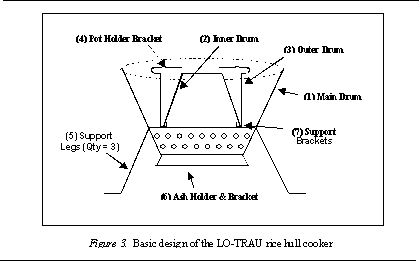
Figure 3. Basic design of the LO-TRAU rice hull cooker
Early demonstrations showed that there was a great deal of interest in the cookers due to the relatively easy ignition and rapid cooking times. In situ test findings showed that it took only 5 minutes to boil water using an approximate 180g of rice husk. This figure is impressive when compared to liquefied petroleum gas (LPG), fuelwood, and charcoal stoves, which required 5, 15, and 20 minutes respectively to boil the same amount of water. It should also be noted that at the present time both wood and charcoal fires are frequently ignited using kerosene, a cost that would be eliminated with the rice husk stove.
The most popular cooking fuel in the Philippines is clearly fuelwood, which is used by some 8 million households. Burning fuelwood within the home creates a great deal of smoke, which can lead to respiratory difficulties. The LO-TRAU stoves were found to burn cleanly, emitting very little smoke. The high quantity of ash associated with the burning of rice hull is recycled to the fields. Care should be taken in handling the ash, as prolonged exposure to the silica particulates can cause health problems associated with respiratory difficulties.
1 Information and basic design concept for the LO-TRAU stove taken from "Using LO-TRAU Rice Husk Stoves" compiled by Hieu Hien, Phan extracted from "The LO-TRAU", Van Nguu, Nguyen, July 1, 1992.